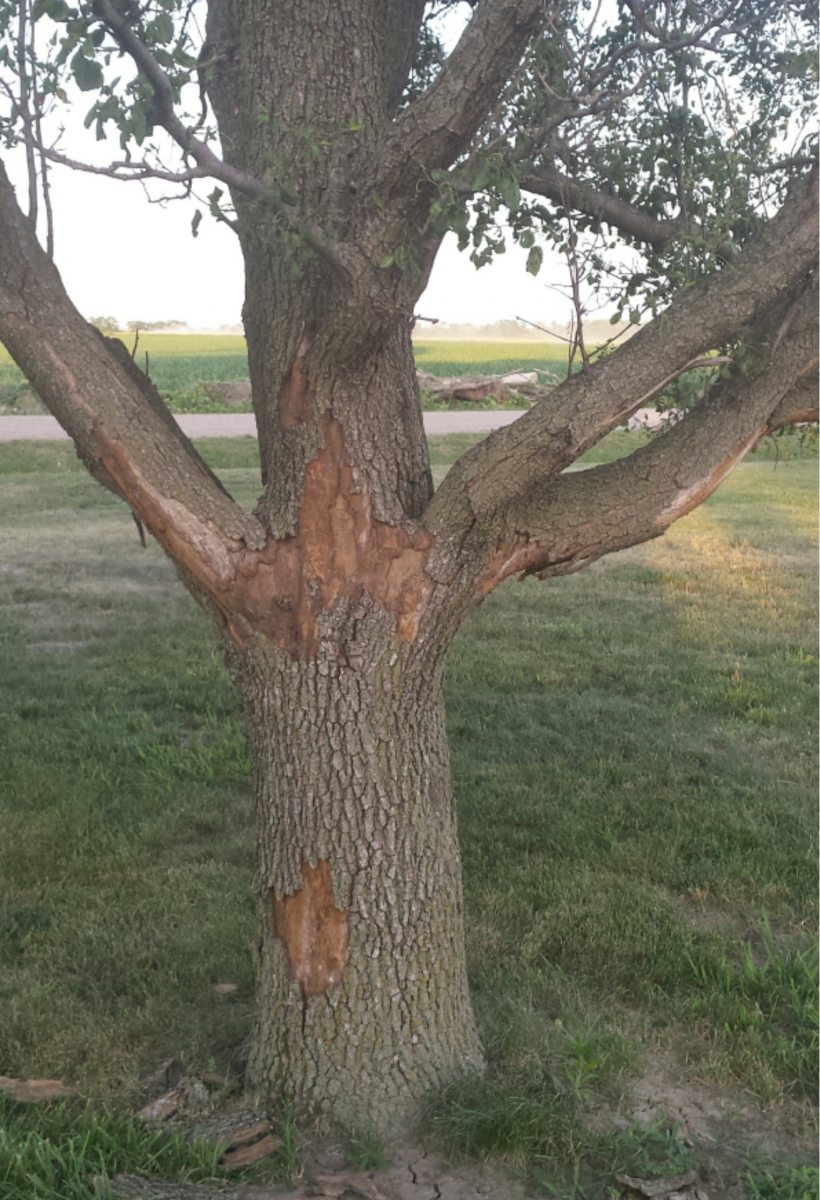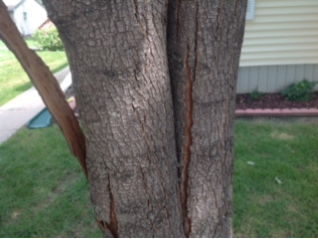By: Jennifer Morris, Forest Health Specialist
Bradford pears (Pyrus calleryana ‘Bradford’) have shown bark cracking and bark sloughing in the last few years. Mower injury and stress fractures from heavy snow loads or high wind events may lead to bark cracking and sloughing, but it is more likely that most of the damage has been caused by temperature fluctuations that we have experienced in the fall, winter and spring over the course of several years.
 Freezing Temperature Injury
Freezing Temperature Injury
At the end of November, 2014 temperatures dropped sharply. A warming trend causing temperatures to rise into the upper 70s and lower 80s was followed by a drop in temperature by as much as 70 degrees in some areas of the state in a 24-hour period. Tissues that were not fully hardened off were damaged or killed. Damaged bark began cracking and peeling the following year.
Frost Cracks & Sunscald
In recent years, many areas of the state have experienced extreme fluctuations in winter temperatures that can lead to frost cracks and sunscald. Both conditions are more likely found on the south or southwest side of the tree.
Longitudinal frost cracks occur when a sudden drop in temperature causes the outer wood to shrink or contract faster than the wood beneath. Old injuries caused by pruning, injections or damage to roots can initiate the crack internally.
Sunscald is caused by the warming of tissue on a winter day by the sun on young trees or trees that have thinner bark. Trunk tissue becomes less cold hardy during the warming period and then suffers from freeze injury when the temperatures drop again. Sunken cankers or dead areas can be found underneath the bark.
 Little can be done for injury caused by extreme temperature events. Bark cracks and bark sloughing that
have been observed can be severe enough to impact the health and longevity of the tree. Giving the tree adequate moisture during dry
periods, mulching with wood chips and not over fertilizing can help the tree recover, but sometimes the damage may be too great for long
term survival.
Little can be done for injury caused by extreme temperature events. Bark cracks and bark sloughing that
have been observed can be severe enough to impact the health and longevity of the tree. Giving the tree adequate moisture during dry
periods, mulching with wood chips and not over fertilizing can help the tree recover, but sometimes the damage may be too great for long
term survival.